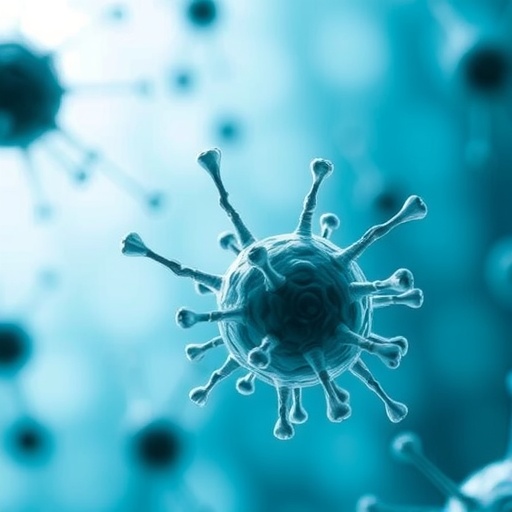Researchers hope confirmation of association will lead to novel therapeutics for infants and adults

Credit: UC San Diego Health Sciences
Breastfeeding affects infant growth and, researchers have found, helps prevent obesity, both in childhood and later in life. However, the components of breast milk responsible for these beneficial effects remain mostly a mystery.
Human milk is an elaborate blend of proteins, fats, minerals and vitamins, plus complex sugar molecules called human milk oligosaccharides, or HMOs. There are approximately 150 types of HMOs. Like thumb and tongue prints, the combination and concentration of HMOs is unique to each nursing mother.
In a new study, published in the February 18, 2020 online issue of The American Journal of Clinical Nutrition, researchers at University of California San Diego School of Medicine confirmed the findings of previous pilot studies that found an association between HMO concentrations and infant weight and body composition.
The earlier pilot studies looked at a smaller, combined cohort of approximately 30 infants who were exclusively breastfed and who displayed excessive weight gain over a period of six months. The UC San Diego study examined a much larger cohort of 802 mothers and their children, part of the longitudinal Steps to Healthy Development of Children (STEPS) study, led by researchers at the University of Turku in Finland. The children were examined from birth to age 5.
The researchers found that high concentrations of one HMO called 2′-Fucosyllactose (2’FL) and low concentrations of another HMO known as Lacto-N-neotetraose (LNnT) were associated with growth in infancy and early childhood. Depending upon concentrations of HMOs in mother’s milk, but independent of the mother’s pre-pregnancy body mass index or duration of breastfeeding, infant height and weight can vary by half a standard deviation. Standard deviation is a measure of how spread out numbers are.
“We were surprised by the magnitude of the association,” said senior author Lars Bode, PhD, professor of pediatrics at UC San Diego School of Medicine and director of the Larsson-Rosenquist Foundation Mother-Milk-Infant Center of Research Excellence. “The impact persisted long after actual exposure to HMOs during breastfeeding. Our analytical platform allows us to measure and associate individual HMOs with specific health and development outcomes.”
HMOs are natural prebiotics that contribute to the shaping of the infant gut microbiome, which may affect health and disease risk. But they also act independently of the microbiome, protecting the infant from diseases, such as infectious diarrhea or necrotizing enterocolitis, a serious condition that impacts the intestine of premature infants. HMOs potentially also reduce the risk for non-communicable diseases, such as asthma, allergies and obesity later in life.
“Our goal is to generate a deep mechanistic understanding of how HMOs in a mom’s milk can contribute to infant health and development. Although we are only at the very beginning, the generated knowledge provides fascinating new opportunities,” said Bode. “Some HMOs could help infants who are behind the growth curve; other HMOs could do the opposite and help lower the risk of childhood obesity. We could even imagine applying HMOs as novel therapeutics for adults who either need to gain weight or suffer from overweight and obesity.”
Bode said the study is also an example of how data can help guide the development of HMO blends for different products promoting health. “We could tailor HMO composition in products based on actual scientific evidence and desired outcomes. Much like personalized medicine.”
The association results from cohort studies are an impactful way to generate new hypotheses, said the researchers, especially if several different cohorts show very similar associations. However, association studies do not prove causality. Bode said his team’s next steps include bringing the data back to the lab to test whether or not HMOs, either alone or in combination, affect growth and to pinpoint the underlying mechanisms.
###
Co-authors include: Chloe Yonemitsu and Julia Gupta, UC San Diego; Hanna Lagström, Samuli Rautava, Helena Ollila, Anne Kaljonen and Olli Turta, University of Turku; and Johanna Mäkelä, Tampere University Hospital.
Media Contact
Michelle Brubaker
[email protected]
858-249-0456
Related Journal Article
http://dx.




